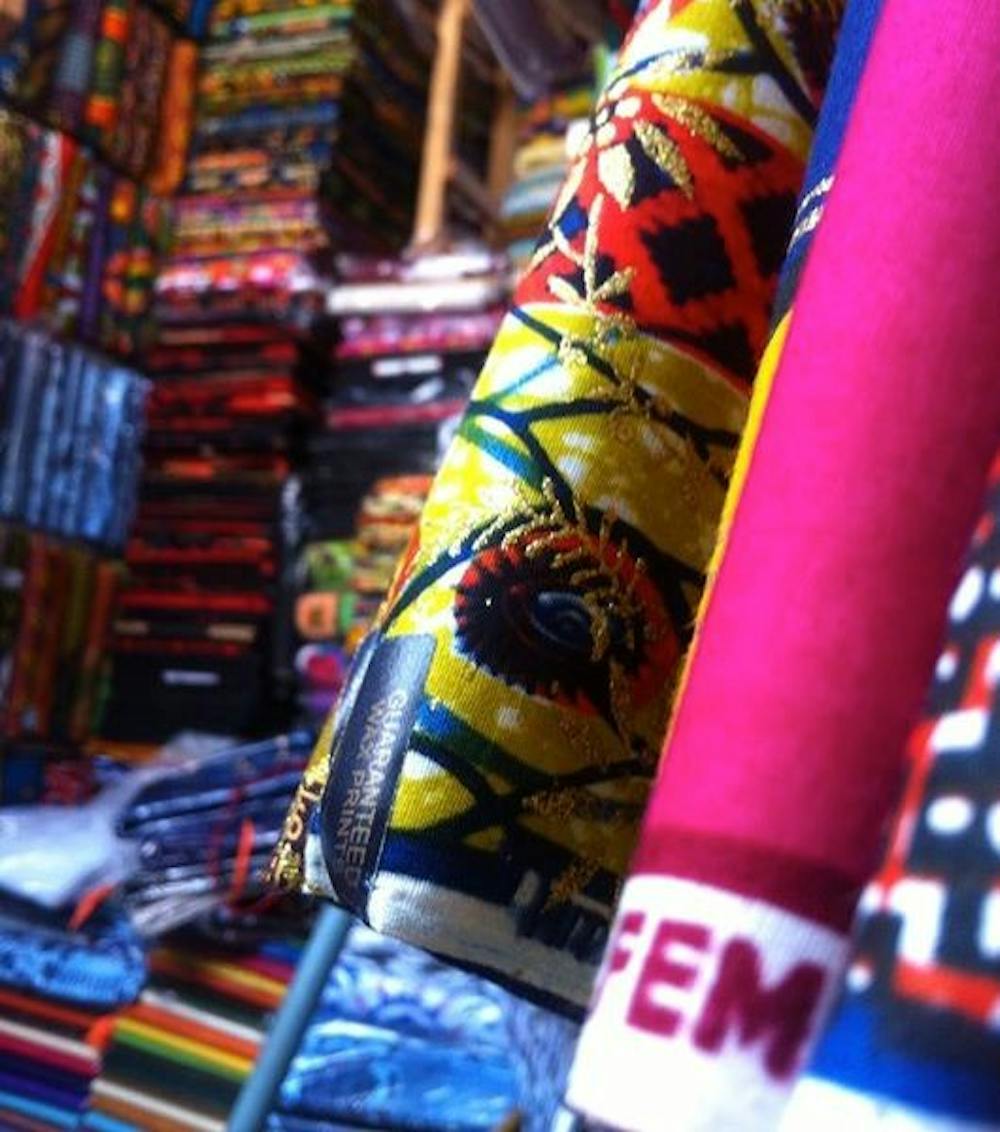One thing I never foresaw being excited about was Ghanaian fashion (simply because I had never heard about it before) but, upon arriving in Ghana, I immediately saw Ghanaian men and women dressed in complex patterns and rich colors. Every street was a tapestry of the most interesting clothing I have ever seen, and within days of arriving I decided getting Ghanaian clothing was one of my top priorities.
So after settling in I started looking for Ghanaian clothes in markets and shops.
I couldn’t find anything. Zilch. Nada. Nothing.
Every clothes store I looked at only had western clothing. When I asked where I could buy a Ghanaian shirt, I got pointed to touristy areas of the city -- clearly not where actual Ghanaians bought their clothes. This was frustrating, to say the least.
After a few weeks of silently trying to figure out how Ghanaians get their clothes without ever buying them (and failing miserably), I risked looking naïve and asked my coworker.
It turns out the reason why you can’t buy Ghanaian clothing in the western sense is that every piece of Ghanaian clothing is tailored. Unlike in the US where tailoring is a luxury, getting personally made clothes in Ghana is typical and inexpensive. With this information I realized that I had the opportunity to affordably design my own clothing out of the beautiful fabrics I admired every day.
And so began my small voyage into the world of Ghanaian designing, an experience that I want to share with you all, partially because I hope it will inspire every Princeton student to travel to Ghana, but (if that fails) because clothing – how it’s perceived and how it’s made – is a cultural phenomenon. I never realized that until I saw how utterly different this process of getting clothing was from my own.
With that being said, here are the three steps I took to attain both amateur fashion designer status and the four items of clothing that now make up my Ghanaian wardrobe.
Step 1: Buying Fabric
Of course the raw ingredient of clothing is fabric, so choosing your colors and patterns is the first step. There’s an interesting unifying system to buying fabrics in Ghana – you can find the same fabric brands throughout the country. The fabric brands lie on a spectrum of quality – more expensive lines of fabric last longer and have vivid colors, while their cheaper counterparts bleed dye when washed. Many brands are locally made in Ghana and some are actually imported from The Netherlands. Having the same brands available everywhere is actually incredibly convenient; you can always count on the quality of your fabric and, once you know the prices of each line of fabric, you know if a salesperson is trying to rip you off.
Also unifying is the range of patterns available on Ghanaian fabric. Hundreds of designs exist, but after spending over a month in Ghana I noticed how people were wearing the same patterns and colors all over the country. Most designs on fabric have a history in Ghanaian culture – some colors and patterns are specifically used for certain events, and others have symbolic meaning. New hip companies riff off the traditional Ghanaian designs, but you can still see the influence of patterns that have existed for hundreds of years. With this unity, wearing Ghanaian patterns is a way of participating in Ghanaian culture.
When I first imagined actually buying my fabric, I envisioned myself carefully looking at each beautiful design while talking to a salesperson about the complex cultural history of each pattern. Not so. Most places where fabric is sold the cloth is piled from floor to ceiling and hundreds of options are available – this works well for Ghanaians, who are generally well-acquainted with many of the designs. Of course I’m not Ghanaian or well-acquainted with Ghanaian patterns, so I spent hours in the Kumasi Central Market in what was the most visually overwhelming experience of my life.
Step 2: Designing the Clothes
After surviving the stress of choosing from countless fabric options comes a less overwhelming although equally challenging part of the process – designing your clothes. And because you get to design what you wear, the final product is as much individualized as it is recognizably Ghanaian.
This was by far my favorite part of getting my clothes made. I pulled out a sketch pad and drew the clothes I had always looked for in the US but with all the details I wanted and could never get in a pre-made piece – I drew overall shorts with the perfect buttons, a casual-but-tight patterned skirt, loose shorts, and a slightly oversized button-down.
Step 3: Getting it Tailored
I initially assumed getting something tailored would take weeks and that I would need to commute hours through city traffic just to make it happen. On the day I decided to find a tailor I asked where the closest one was, expecting the worst. Of course the inconvenience I planned for was all in my head – I found out that not only were there tailors down the block and a few others within walking distance, but getting items tailored takes days rather than weeks. I had to remind myself that for Ghanaians this was not the hassle or extravagance it is in the US.
My tailor worked in a one-room shop with her sister. They used my designs to work on my clothes; I stopped by regularly to see the progress, do fittings, and ask for alterations. When they were finished I had the four most unique pieces of clothing I could imagine – and, because they were tailored, they fit me perfectly.
Moral of the story: fashion is inextricably linked to culture in ways we rarely expect. And if you ever happen to find yourself in the bustling chaos of Accra, find the closest fabric store and start designing your wardrobe!






